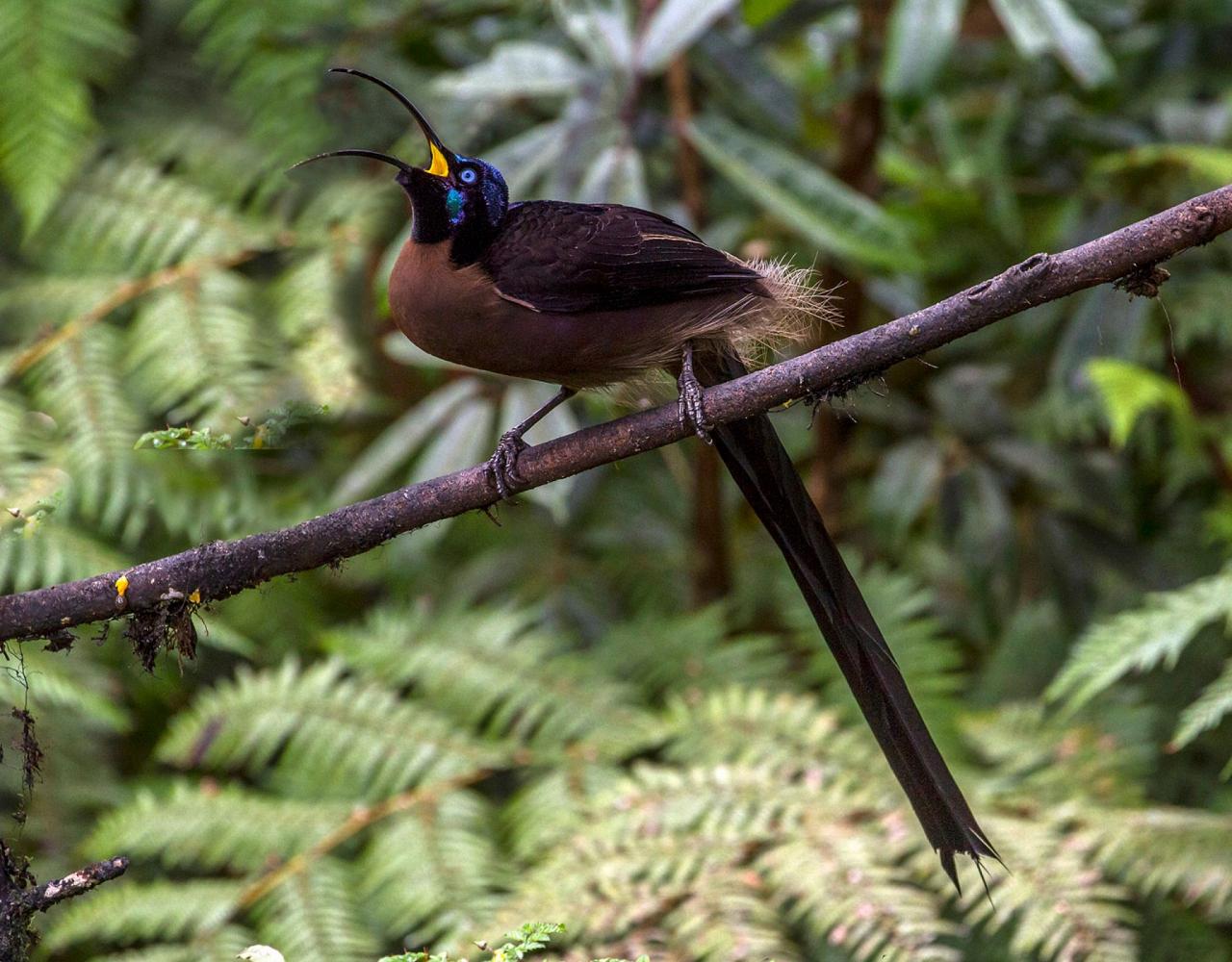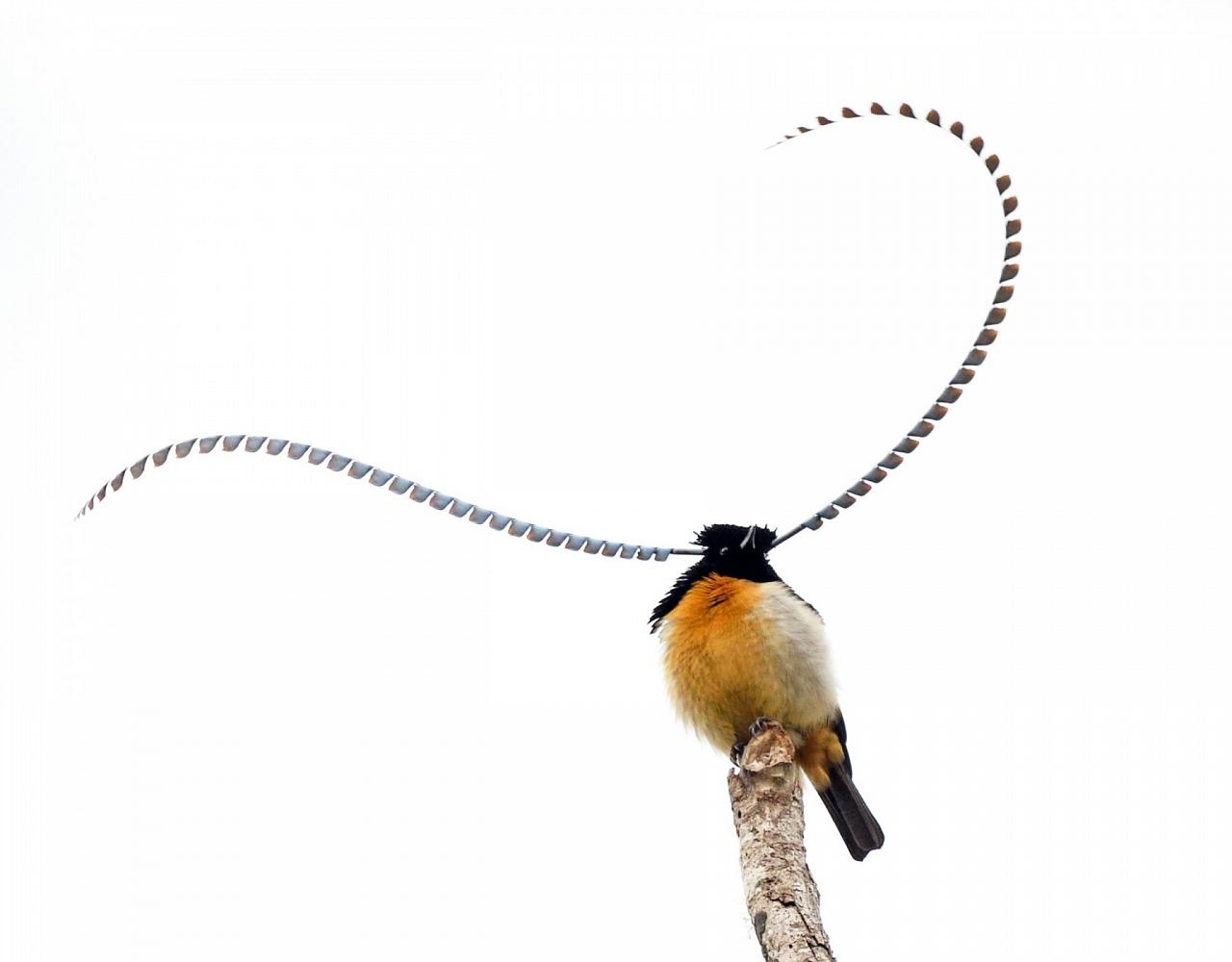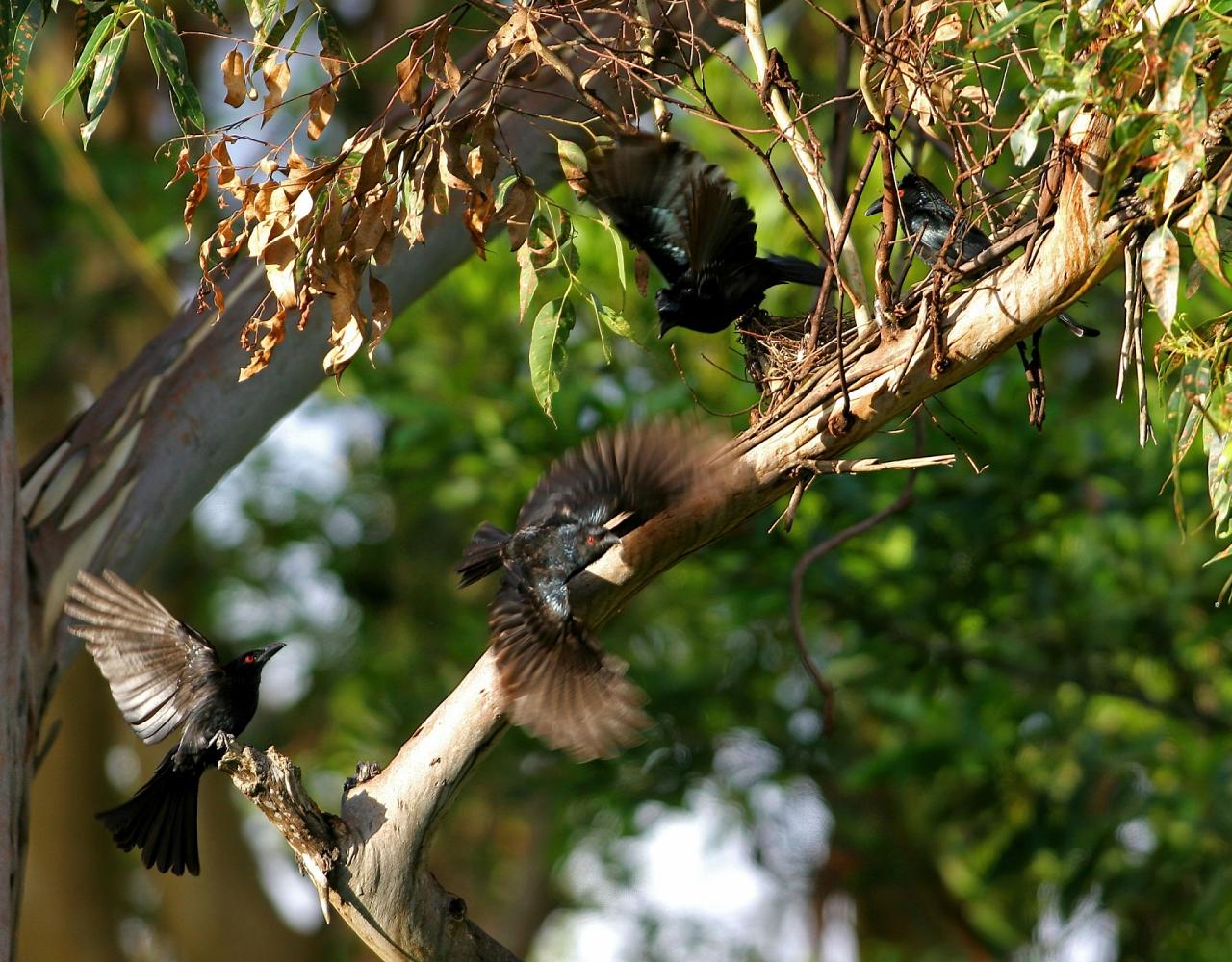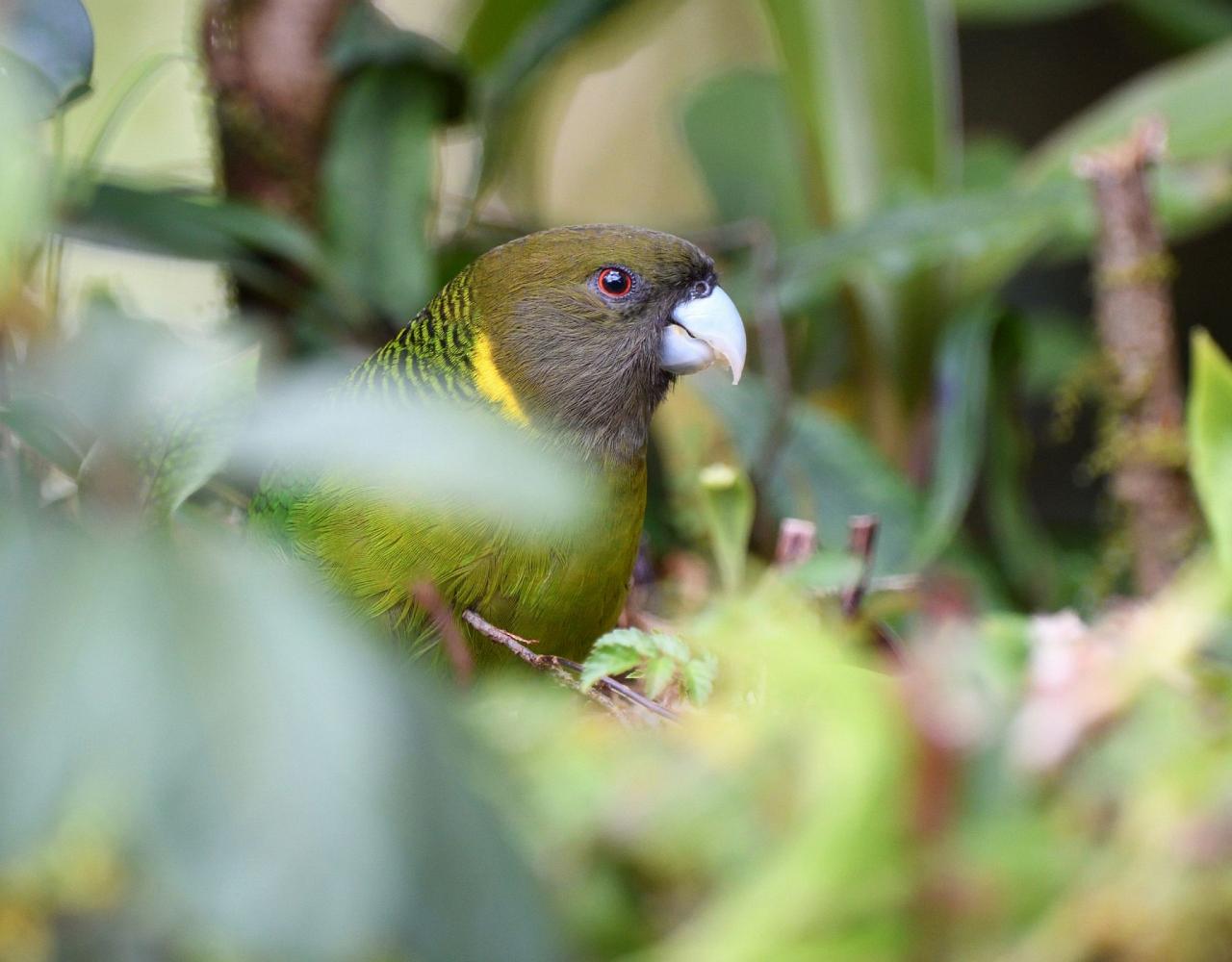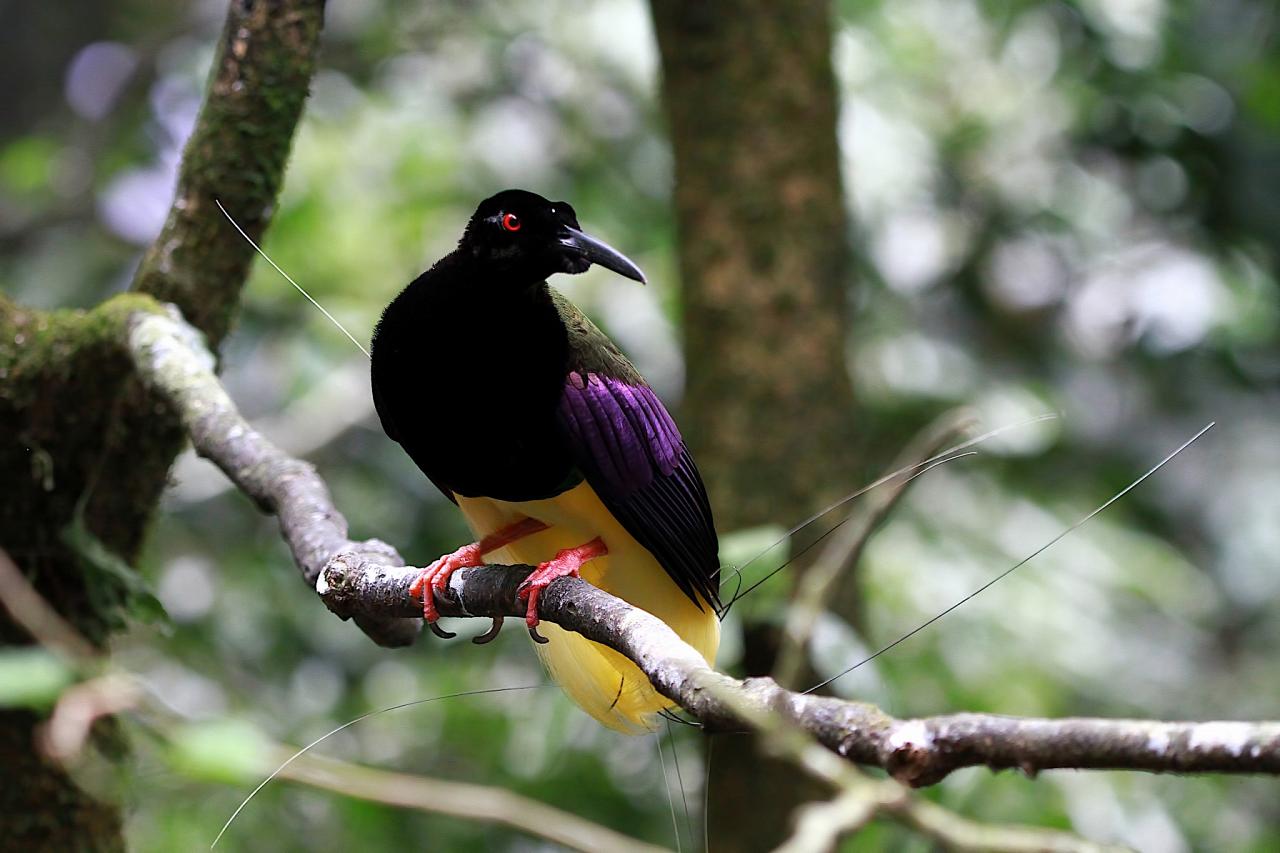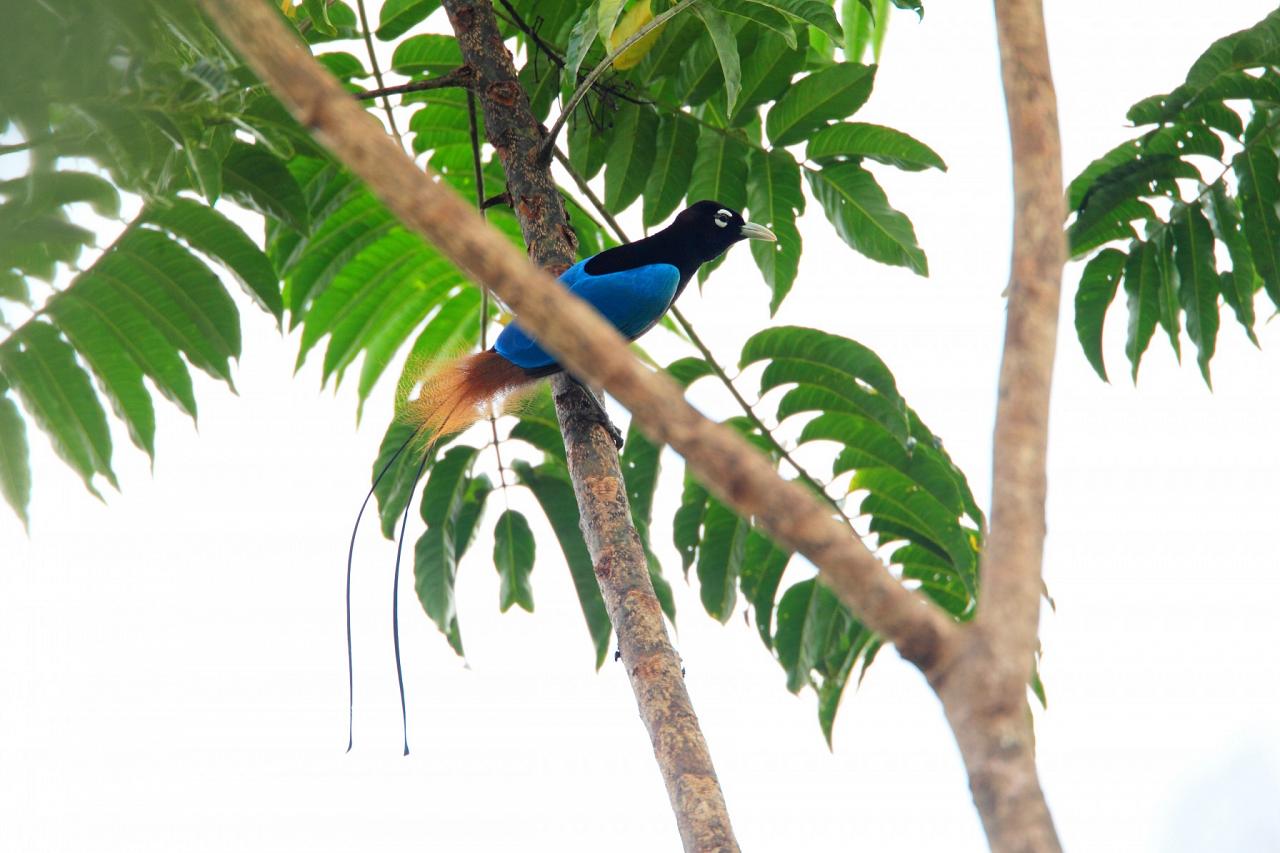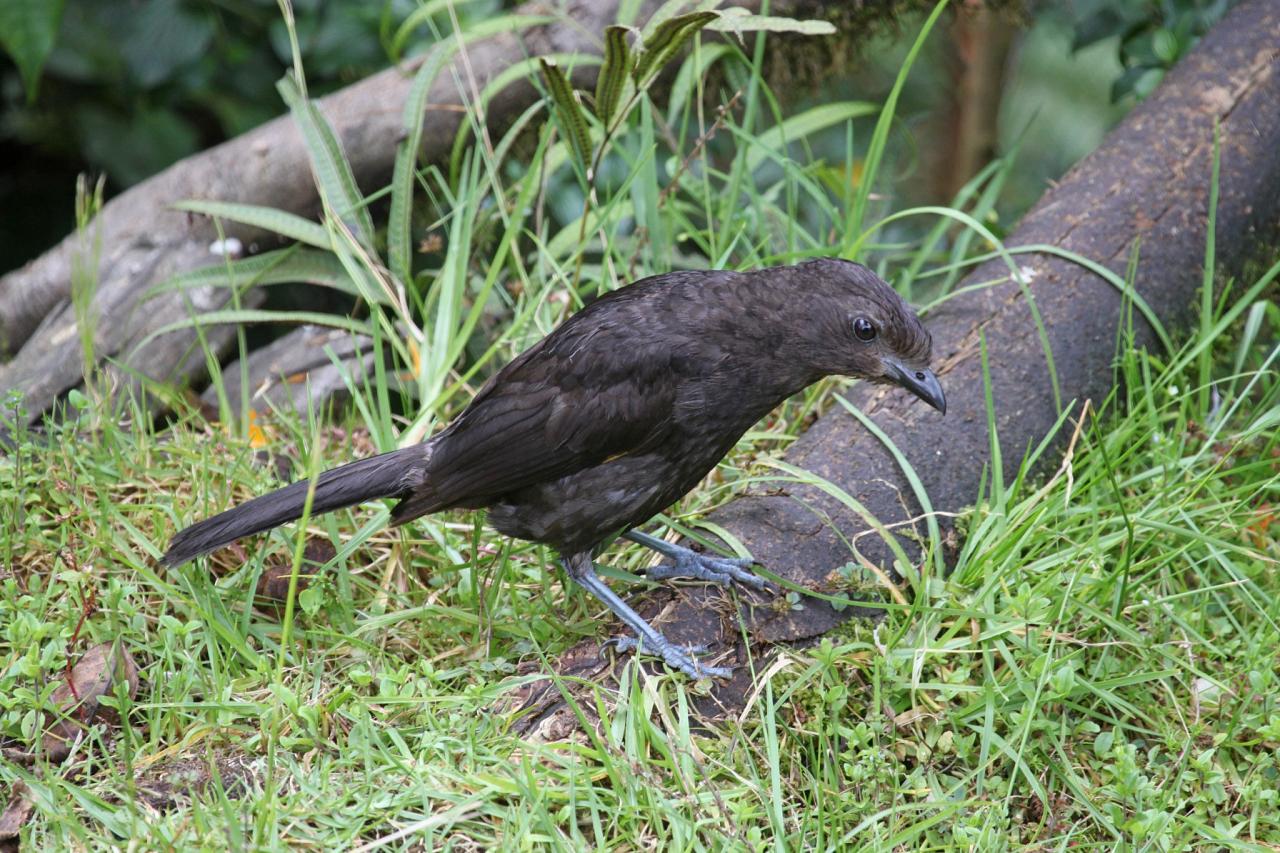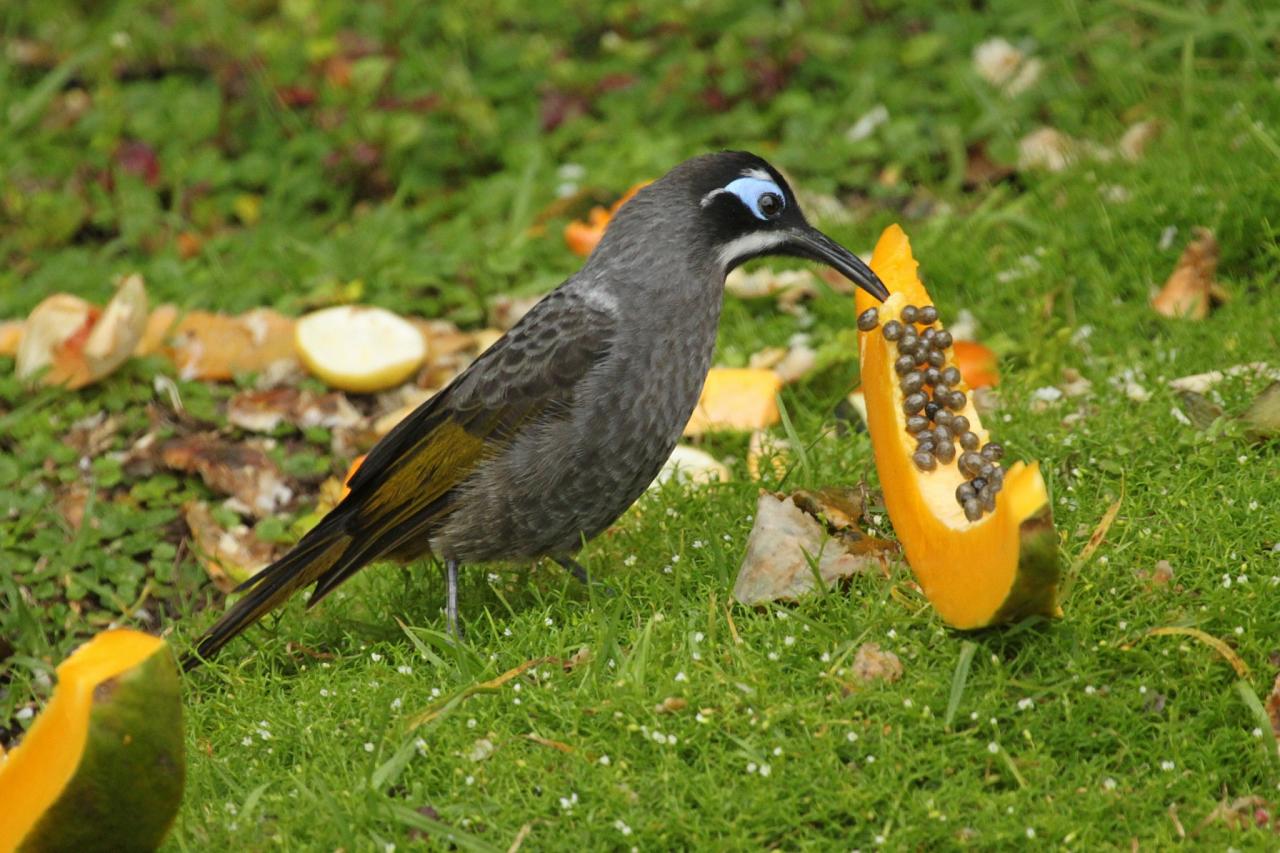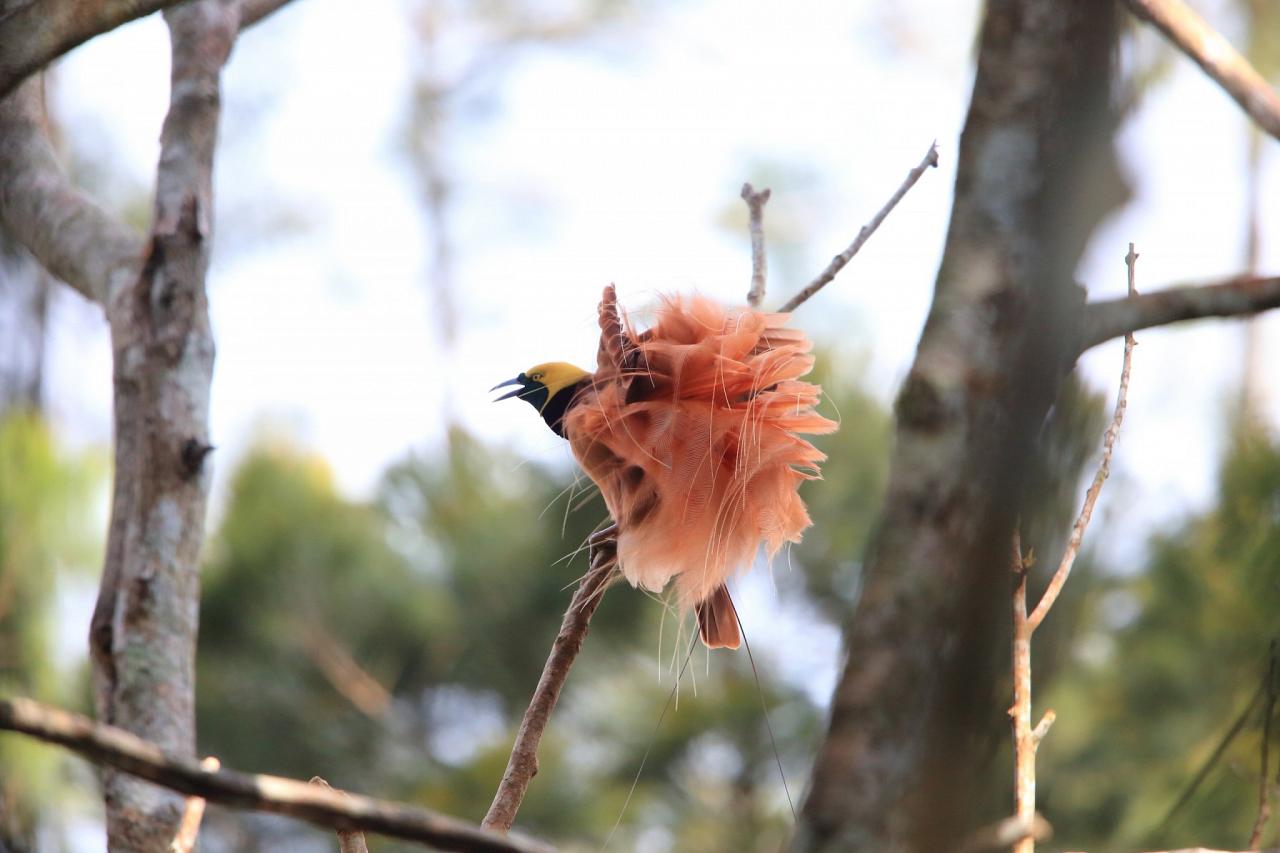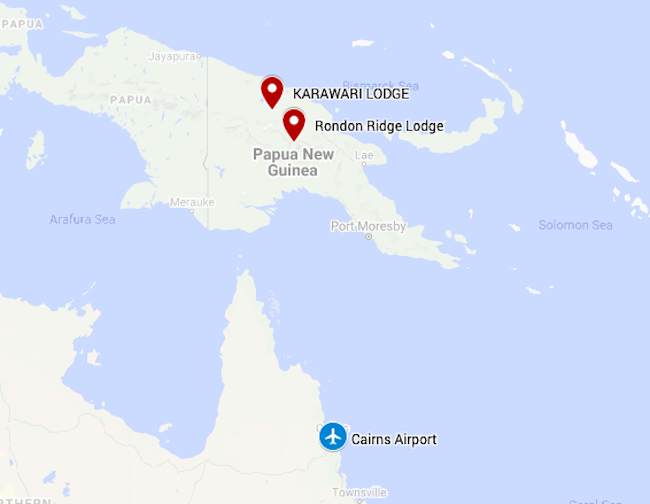The island of Papua New Guinea has one of the richest and varied avifauna in the world. Over 700 species of birds have been identified here so far, including around 580 land and freshwater species, 40 sea birds, and 90 migrants from countries to the North and South. The passerines are diverse and include cuckoo-shrikes and trillers, shrikes, thrushes, logrunners, babblers, warblers, fairy-wrens, fantails, monarchs and robins, honeyeaters, finches, starlings, mynahs, orioles, drongos, wood swallows, butcherbirds, and bowerbirds—wow! The non-perching birds include cassowaries, birds of prey, megapods, pigeons and doves, cuckoos and coucals, owls and frogmouths, lorries and lorikeets, parrots, cockatoos, kingfishers, and hornbills.
Perhaps most famous are Papua New Guinea’s incredible Birds of Paradise, made known to the world through David Attenborough films and more recently the incredible imagery of the Birds of Paradise Project by Cornell University. Thirty-eight of the 40 + known species of Bird of Paradise are found in Papua New Guinea. As with herons and egrets in our part of the world, the millinery trade of the last century caused a significant drop in the populations of these beautiful birds and as a result, all species of Bird of Paradise in Papua New Guinea are now protected.
There are options to extend your stay with a few other tours through our local operator. If this is something you may be interested in, please let us know and we can help you add on more time in paradise!
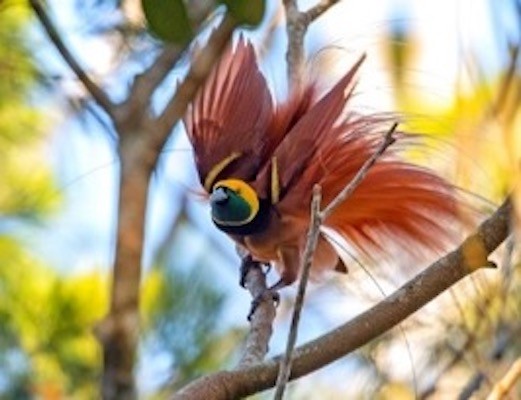
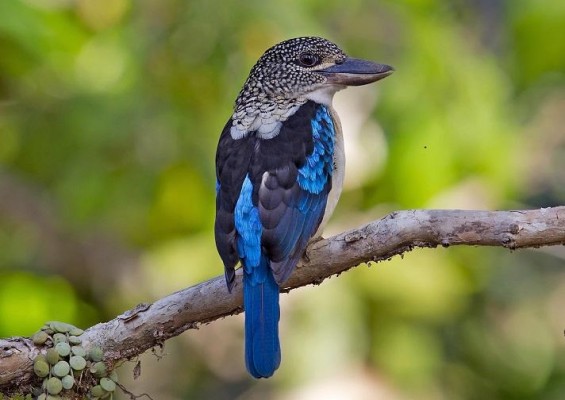
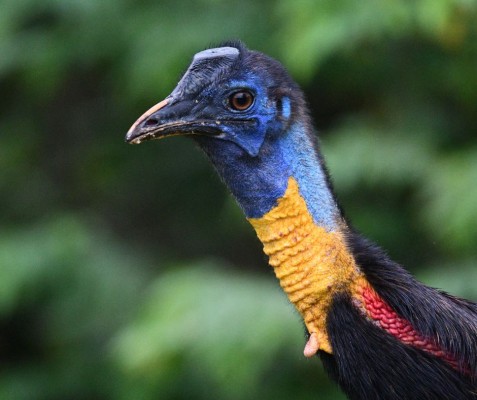
Tour Highlights
- Discover the modern, waterfront city of Cairns, Australia, at the start and end of the tour
- Marvel at the beautiful Rondon Ridge Lodge, nestled deep in Papua New Guinea’s rainforest highlands
- Cameras at the ready! 10 species of Bird of Paradise near Rondon Ridge
- Experience cultural activities at local villages; these areas are known for festivals and dancing
- Explore Papua New Guinea's lowlands at Karawari Lodge, exclusively accessible by boat
- Look for amazing Birds of Paradise, parrots, and even the enormous Northern Cassowary near Kawawari

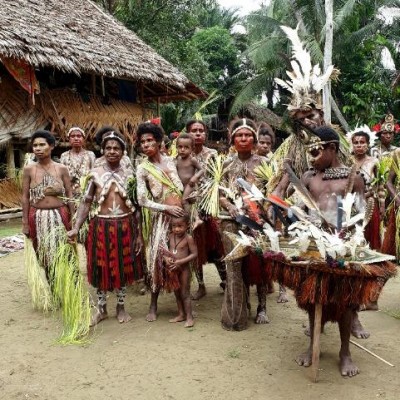
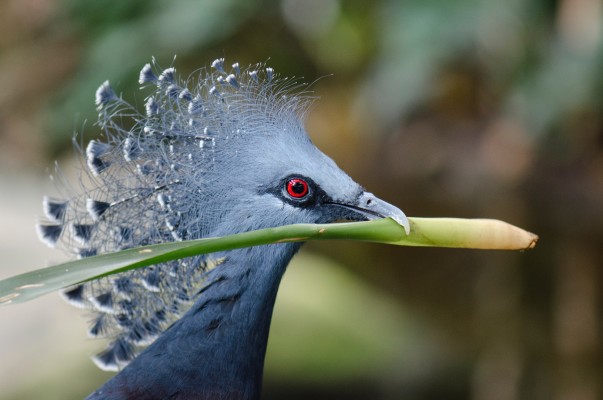
Trip Itinerary
Itineraries are guidelines; variations in itinerary may occur to account for weather, road conditions, closures, etc. and to maximize your experience.
Sun., Aug. 3 Arrivals
Plan your flights to arrive no later than today to Cairns, Australia. Rest up, do a bit of birding on the waterfront, and be ready for tomorrow’s flight to PNG’s Port Moresby, then onward to Mt. Hagen. We plan dinner at leisure as some will be tired from travel—those up to it can enjoy one of Cairn’s many great restaurants this evening.
Accommodation in Cairns (D)
Mon., Aug. 4 Cairns to Mt. Hagen | Rondon Ridge Lodge
This morning, after breakfast, we transfer to the Cairns Airport for our flight to Mt. Hagen via Port Moresby. Our flights are arranged by our Australian partner (additional cost). Based on the 2021 schedule, the flight to Mt. Hagen should be approximately 11:45 AM with a plane change in Port Moresby.
Mt. Hagan is situated in the mountains … so beautiful scenery awaits! We are met at the Mt. Hagan Kagamuga Airport and then drive about 60 miles to our delightful accommodations in the Western Highlands Province of PNG.
Rondon Ridge is located at an elevation of 7,100 feet above sea level on the outer fringes of the Kubor Range with panoramic views of the Wahgi Valley below. There is some of the oldest evidence of agriculture on PNG in this valley. Today, the area produces fresh fruit and vegetables, and tea and coffee plantations abound.
We enjoy tastefully appointed rooms that feature double doors opening to expansive views. In our rooms are lovely furnishings and floors made from local wood. Our beds are warmed and we have cozy blankets for those fresh highland nights. All rooms have modern private bathrooms. The facility has 24-hour, eco-friendly electricity, provided by its own hydroelectric power plant that generates clean, natural energy from a nearby mountain stream.
Accommodations at Rondon Ridge (B,L,D)
Tues., Aug. 5 – Fri., Aug. 8 PNG Highlands: Four Days of Incredible Birding from Rondon Ridge Lodge
Immerse yourselves in the forests of PNG. We spend four full days birding in the lush, high-altitude forests behind Rondon Ridge. Over 180 species of birds have been recorded in these rainforests, including ten species of Bird of Paradise. The surrounding area is pristine rainforest and home to numerous orchid species. The lodge has hours of walking trails providing ample opportunity to explore the unique ecology. Close to the lodge we look for Macgregor's Bowerbird, Brown Sicklebill, Stephanie's Astrapia, and the Superb Bird of Paradise among many others. Further afield is the Black Sicklebill, the Buff-tailed Sicklebill, King of Saxony Bird of Paradise, and the Short-tailed Paradigalla, to name a few.
One of our days here we plan a visit to another nearby community-run lodge, just across the border in Enga Province, so famous for its Bird of Paradise sightings. Species we can see here include Belford’s Melidectes, Ribbon-tailed Astrapia, Brown Sicklebill, and Brehm’s Tiger Parrot. Regent Whistler, Eastern Crested Berrypecker, and Rufous-naped Bellbird can be seen feeding in the trees, and White-winged Robin is also a regular here.
On another day we travel to a local village to look for Raggiana Bird-of-paradise (the national bird of Papua New Guinea and the species featured on the country’s flag). For those that wish, we can take advantage of cultural activities offered by local communities, with a guide; this area is known for festivals and dancing.
Accommodations at Rondon Ridge (B,L,D)
Sat., Aug. 9 Rondon Ridge | Mt. Hagen | PNG Lowlands at Karawari Lodge in the Eastern Sepik Region
This morning after breakfast, we return from Rondon Ridge to Mt. Hagen airport where we take a charter flight (cost included in tour) to Karawari in the Eastern Sepik Province of PNG.
Our accommodations are located in one of the most remote and unspoiled locations in Papua New Guinea. Here, people live as they have for centuries, living in stilt homes along the river and fishing. The lodge sits above the river with a commanding view.
Inspired by local architecture and built with traditional materials, the lodge is intimate (only 10 rooms) and despite its remote location, provides modern comforts.
The transfer from Karawari’s private airstrip to our accommodations at Karawari Lodge is by boat—the only practical means of transport in this extremely isolated part of the world. Enjoy seeing villages that line the
edges of flooded waterways. For local people, dugout canoes are the primary mode of transport. There are no roads, no shops, and no phones.
The Sepik River inhabitants live completely off the land, weaving baskets for catching fish; gathering, preparing, and cooking their staple food from the Sago Palm.
From the deck of our lodge, we enjoy spectacular view over hundreds of kilometres of dense tropical lowland rainforest. This afternoon we bird in the area around the lodge and settle into our rooms. Each room has a modern private bathroom, 220V electricity, hot and cold water, comfortable mosquito-netted beds, ceiling fans, and a breezy veranda—all of which make for a welcome sanctuary after a day's exploration in the steamy, but bird-rich lowland rainforest.
Accommodations at Karawari Lodge (B,L,D)
Sun., Aug. 10 – Tues., Aug. 12 Exploring the Lowlands of the Karawari River & Lodge
The tropical lowland rainforest around the lodge is one of earth's most complex of habitats, housing an immense variety of flora and fauna, including an amazing 229 different bird species. We spend two full days birding in this area, searching for the area’s three birds of paradise: the King, the Twelve-Wire, and the Magnificent Riflebird, as well as other lowland, rainforest, and freshwater birds—particularly parrots like lorikeets, Eclectus, Palm Cockatoo, and Edwards-Fig Parrot. Northern Cassowary, as well as frog-mouths, owls, birds of prey, bowerbirds, and honeyeaters are also found in this area.
During our time here there is also an opportunity to visit some nearby villages where we are privileged to see some of the traditional dances and learn about traditional ceremonies and sacred buildings. There is also an opportunity to purchase hand-made artefacts directly from the villagers. This is a seldom offered and truly memorable experience (cultural activities offered are subject to a minimum group size of six paying clients).
Accommodations at Karawari Lodge (B,L,D)
Wed., Aug. 13 & Thurs., Aug. 14 Karawari to Mt. Hagen | Rondon Ridge
We awake on our last morning here to the chorus of Karawari’s birds. Our charter flight back from Karawari Lodge routes back to Mt. Hagen today. On our arrival at Mt. Hagen we return to the now familiar Rondon Ridge Lodge four our last two nights on PNG. We have free time to relax and also spend the days searching for our last views or photographs of Birds of Paradise and other local birds around the lodge.
We celebrate our grand adventure over our dinners, and reflect on all the incredible natural history and bird encounters.
Accommodations at Rondon Ridge (B,L,D)
Fri., Aug. 15 Return to Australia | Cairns
This morning we drive from Rondon Ridge to Mt. Hagen for our International flight back to Cairns, Australia. Based on previous years’ flights, we expect to depart Mt. Hagen right after breakfast for the 10:00 AM flight to Port Moresby. Our connecting flight is scheduled for mid-afternoon, arriving in Cairns by early evening (last year, around 6:30 PM). We have arranged to spend the wait time in Port Moresby at an airport hotel where we can relax by the pool and purchase lunch and snacks.
Our tour continues in Cairns tomorrow, in part as a buffer in case flights are delayed or not provided—PNG air service can be less than reliable, so we make sure we’re buffered. Last year went just fine, but our plan is to be conservative to make sure no-one misses their International flights home. We book our group flights on Air Nuigini so that if flight schedule changes occur, they can assist us with alternate plans and lodgings on the PNG end. Once in Cairns there are many restaurants to choose from along the coastal walkway; tonight is at your leisure.
Accommodations in Cairns (B)
Sat., Aug. 16 Cairns, Australia
Cairns is a lovely place to spend time, situated on the ocean with coastal mountains behind. We plan to offer morning birding along the coastal walkway or at the botanic gardens, or in the afternoon you can enjoy some free time for shopping and relaxing in Cairns ahead of your International flights. Meals other than breakfast are not included here, but there are many restaurant choices for us to select from. Those joining the Wet Tropics trip meet up with the rest of that group today.
Accommodations in Cairns (B)
Sun., Aug. 17 International Departures
Our magnificent journey comes to an end! Please schedule flights out today at a time convenient for you. (B)
Cost of the Journey
Cost of the tour is per person, based on occupancy: $10,390 DBL / $12,120 SGL, from Cairns, Australia. The main tour cost includes: Accommodation for 14 nights of the tour, specialist guiding and transport as outlined in the itinerary, most meals as indicated (B,L,D), activities outlined in the itinerary and National Park and private reserve entry fees. The cost also includes round-trip charter flights between Mt. Hagen/Karawari. The main tour cost does NOT include: International flights to and from Cairns, Australia, International group flight to be arranged for you on Air Nuigini (Cairns-Port Moresby-Mt. Hagen flights) alcoholic and non-alcoholic beverages provided from the bar and expenses of a personal nature (snacks, travel insurance, internet, laundry, tips, etc).
*Price is based on exchange rate from May 9, 2024. Subject to change if there is more than a 5% increase.
Travel Details
Please plan to make air travel plans only after the minimum group size has been met. We will send you a confirmation email as soon as the trip has been confirmed.
Main Tour Arrival and Departure Airport: Cairns Airport (CNS)
Main Tour Arrival Details: Please plan flights to arrive August 3, 2025 at your leisure.
Main Tour Departure Details: Please plan flight departures on August 17, 2025 at your leisure.
Travel Tips: If you arrive early to rest up from your travels, you can book an early night at our first night tour hotel, the Cairns Harbourside Hotel. You can book online and send us the confirmation number, with the goal being you won’t have to switch rooms. We’ll explore Cairns a bit on our tour, but there are still plenty of things to see! There are many beautiful beaches around Cairns for the ultimate in relaxation. If you want to learn more about marine life, the Cairns Aquarium showcases animals and habitats endemic to Tropical North Queensland. With over 16,000 animals, 9 different ecosystems, and a turtle rehabilitation center, there is plenty to explore. The aquarium is a 20-minute walk from the hotel or a quick ride in a taxi or Uber. If you want to stretch your legs after the long flight, the Cairns Esplanade path is right in front of the hotel and goes along Cairns Harbour.
Entry Requirements: See "Essential Information" section under the "Know Before You Go" tab.
Items of Note
Our tour begins in Cairns, Australia. You can arrive, rest up, and do a bit of local birding there before we fly over to Papua New Guinea as a group. In addition to one arrival and two post-tour nights in Cairns, our PNG tour features ten nights at two renowned birding destinations: Rondon Ridge, located in the PNG Highlands, and Karawari Lodge in the lowlands. How nice to have extensive time at two lodges, more time for birding and less on the logistics of getting around! These are small, intimate lodges so it is imperative that we book this tour early to hold our space. While predominantly a birding trip, we are also on the lookout for mammals and interesting flora, particularly interesting ancient Gondwanan species and orchids. At the end of the trip we enjoy two nights in Cairns, important to ensure we are back for International flights. We make the most of this added time in Cairns with birding and time to enjoy this lovely waterfront city—the botanic gardens are a delight!
Make the Most of Your Flight
An added bonus since you’re coming so far, consider joining our Australia Wet Tropics, tour for more in-depth birding in Cairns and the nearby Tablelands or Daintree region first. This part of Australia shares many ecological elements with PNG, including some Birds of Paradise.
PLEASE NOTE:
While we aim to follow the itinerary as planned, this should only be used as a guideline. Depending on individual trip circumstances, weather, and local information, the exact itinerary may not be strictly adhered to. The guides reserve the right to make changes to the itinerary as they see fit.
Browse below for trip reports and species lists from past versions of this and other tours from this destination.
Papua New Guinea
- August 2010
- August 2011
- August 2023
- July 2024
Essential Information +
Pace & Protocols +
Packing List +
Suggested Reading List +
Useful Links +
Photo credits: Lesser Bird of Paradise, Shutterstock; Rainbow Bee-eaters, David Clode, UnSplash; Magnificent Riflebird, Shutterstock; Sepik Village, Shutterstock; Northern Cassowary, Shutterstock; Raggiana Bird of Paradise, courtesy Inala Nature Tours (INT); Spangled Kookaburra, INT; Sulphur-crested Cockatoo, NJ Stock; PNG Villagers, Bron Scot; Victoria Crowned Pigeon, Susanne Schwarz, UnSplash; Cairns Skyline, Shutterstock; Kubor Range, Shutterstock; Papuan Lorikeet, Shutterstock; Sepik River, Shutterstock; Lesser Bird of Paradise, Shutterstock; Cairns Boardwalk, Shutterstock; Twelve-wired Bird of Paradise, Shutterstock; Blue Bird of Paradise, Shutterstock; Lawes's Parotia, Shutterstock; Ibis, Peg Abbott; Archibald's Bowerbird, Peg Abbott; Belford’s Meladictes, Peg Abbott; Palm Cockatoos, Shutterstock; Raggiana Bird of Paradise, Shutterstock; Blyth’s Hornbill, Axel Blanchard, UnSplash.






